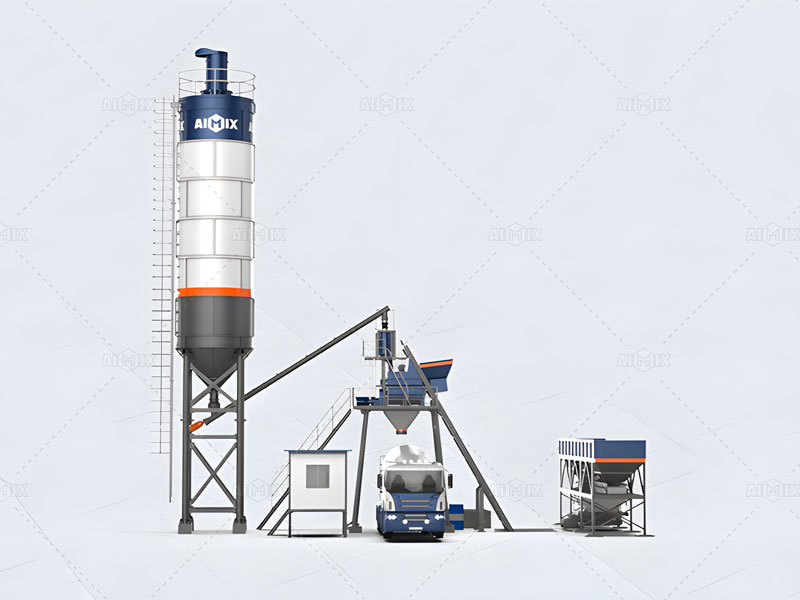


Assess the adequacy of a 60 m³/h mobile concrete plant for daily casting in IKN projects aiming for 500 m³ weekly.
The IKN (Ibu Kota Nusantara) project has accelerated demand for efficient, mobile, and site-adaptable concrete production. For many contractors, especially those involved in casting works, a common question arises: is a 60 m³/h mobile concrete batch plant for sale sufficient to meet a weekly casting target of 500 m³? In this article, I’ll break down the answer from both a practical and project management perspective to help you make an informed decision.
Let’s begin by converting the weekly target into daily demand. If the goal is 500 m³ per week and casting is done six days per week (which is typical in most Indonesian construction schedules), then the required daily output is about 83–85 m³.
Now the question becomes clearer: can a 60 m³/h plant reliably produce 85 m³ of concrete in a day? The answer depends on more than just theoretical capacity. We need to consider site conditions, operational time, and buffer needs.
Assume the mobile rmc plant runs for 4–5 effective hours per day due to casting windows, setup, cleaning, and weather. At 60 m³/h, even with only 1.5 hours of effective casting, the plant can produce over 90 m³ per day. So from a pure capacity standpoint, yes — the plant is technically sufficient.
In real-world projects like IKN, daily casting isn’t always smooth. Traffic delays, site logistics, power outages, and pump waiting time can all reduce productivity. That’s why it’s important to factor in a 15–20% margin for contingencies.
So while a 60 m³/h mobile batch plant is capable, its actual daily contribution may range from 70 to 95 m³ depending on coordination and buffer planning.
Before choosing a batching plant equipment(https://aimixgroup.id/batching-plant/), it’s also crucial to think beyond volume. A concrete plant that’s too large may waste energy and resources. One too small may cause schedule delays. A 60 m³/h model strikes a balance for many mid-scale projects, especially when the site requires frequent relocation or has limited setup area.
In the context of IKN, where projects span remote zones and vary in volume day by day, this flexibility is a major advantage.
Aside from raw capacity, project owners should ask:
All these factors influence whether a 60 m³/h plant will be enough or if it needs to be supplemented with a backup batching system or night shift.
If your project often exceeds 100 m³/day or requires 24/7 casting support (such as in foundation slabs or mass pours), then you may need a 75–90 m³/h plant or a second smaller unit for backup. But for many typical IKN tasks — roads, drainages, box culverts, mid-rise buildings — 60 m³/h is an optimal choice.
In summary, a 60 m³/h mobile concrete plant can absolutely meet the needs of a 500 m³ weekly target — if the project is properly planned. With smart scheduling, reliable support systems, and good site management, you can not only hit your target but even exceed it.
However, every project is different. If you have fluctuating demands, limited setup space, or remote delivery risks, let’s talk and customize a batching solution that fits your real daily rhythm.
